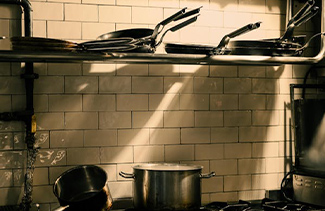
The Secret Behind Stainless Steel's Exceptional Corrosion Resistance
- Views:0
- Author:
- Publish Time:2025-06-12
- Origin:
Stainless steel is renowned for its remarkable ability to resist corrosion, making it a preferred choice across various industries, from construction to food processing. But what exactly gives stainless steel its superior corrosion resistance? Let’s explore the role of its metallic elements, particularly nickel and chromium, and how they contribute to this essential property.

The Role of Chromium
At the heart of stainless steel’s corrosion resistance is chromium, which typically constitutes at least 10.5% of the alloy. When exposed to oxygen, chromium forms a thin, protective layer of chromium oxide on the surface of the steel. This passive layer acts as a barrier, preventing moisture and corrosive substances from penetrating the metal.
Corrosion Resistance: The presence of chromium significantly enhances the material's ability to withstand corrosive environments. For example, stainless steel grade 304 contains approximately 18% chromium, providing excellent resistance to general corrosion.
The Importance of Nickel
Nickel is another critical element in many stainless steel grades, usually comprising 8-10% in austenitic stainless steels like 304 and 316. Its contributions to corrosion resistance include:
Stabilizing the Austenitic Structure: Nickel helps maintain the austenitic structure of stainless steel, which is vital for strength and ductility, especially in extreme temperatures.
Enhanced Pitting Resistance: Nickel improves the resistance of stainless steel to pitting and crevice corrosion, particularly in chloride environments. For instance, grade 316, which contains about 10% nickel, is commonly used in marine applications due to its superior performance in saltwater conditions.
Data-Driven Insights
Research and industry data highlight the effectiveness of nickel and chromium in enhancing corrosion resistance:
Pitting Resistance Equivalence Number (PREN): This metric is used to evaluate the corrosion resistance of various stainless steel grades. The formula is PREN = %Cr + 3.3 × %Mo + 16 × %N. For example:
Grade 304: With 18% chromium and no molybdenum, it has a PREN of around 25.
Grade 316: With 16% chromium and 2% molybdenum, it boasts a PREN of approximately 30, indicating significantly better resistance to pitting corrosion.
Additional Elements that Contribute
Beyond nickel and chromium, other elements also play a role in enhancing the corrosion resistance of stainless steel:
Molybdenum: Often added to stainless steel grades like 316, molybdenum improves resistance to pitting and crevice corrosion, particularly in chloride environments.
Nitrogen: This element can also enhance the strength and corrosion resistance of stainless steels, particularly in high-performance applications.
Elevate Your Projects with Stainless Steel
Understanding the science behind stainless steel's corrosion resistance highlights why it is an ideal material for various applications. With its unique combination of chromium, nickel, and other alloying elements, stainless steel offers unparalleled durability and longevity. Explore our extensive range of stainless steel products today and experience the benefits of this remarkable material in your projects.















